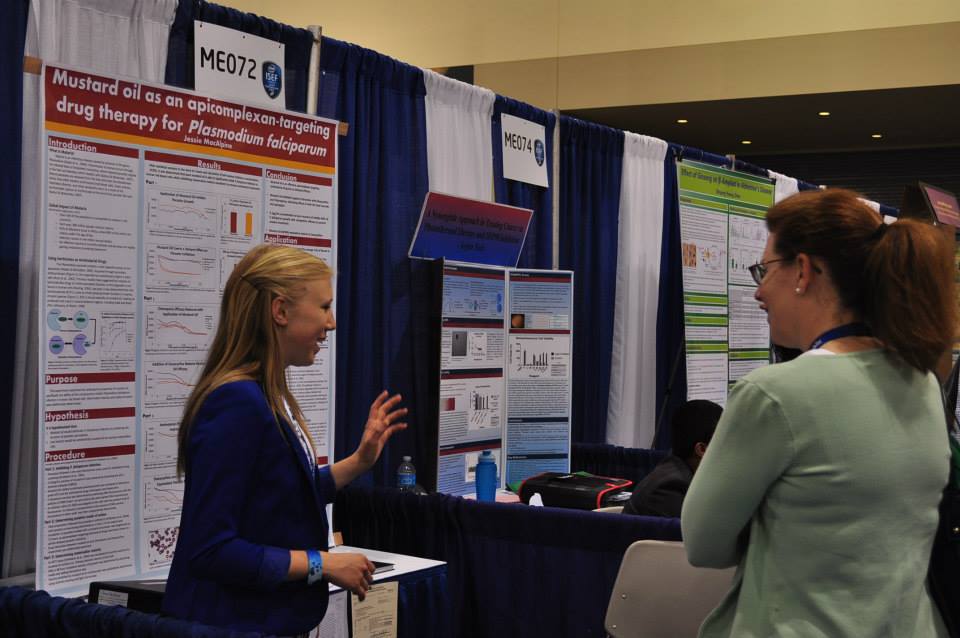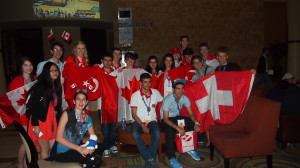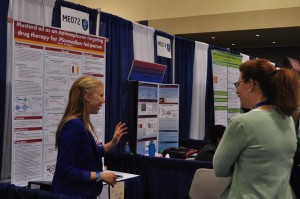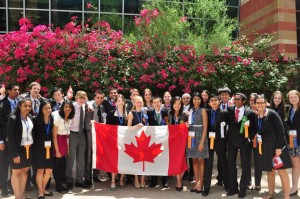Intel International Science and Engineering Fair 2013

As a five-time alumnus of the Canada-Wide Science Fair, I believed I had a thorough understanding of young scientists and their capabilities. However, my previous STEM experiences could not prepare me for the Intel International Science and Engineering Fair.
As the largest pre-college competition for young scientists, this event brings together over 1600 students from 70 countries. Setting aside language and cultural barriers, students are brought together through their shared insatiable curiosity and passion for science and innovation. This year, Intel ISEF took place in Phoenix, Arizona from May 12-17.
Team Canada arrived in Phoenix on May 11 after attending a media training event in Toronto. From the moment we stepped off the plane we were greeted by friendly volunteers and the excited Brazilian team. Our first encounter with each of the Intel ISEF finalists took place at the lively and exciting pin trading event. Being able to interact with passionate young scientists from around the world evoked a sense of pride in both our country and our generation. Every student in that ballroom was already changing the world, and it was exiting to imagine what they would accomplish in the future. Despite only knowing how to speak English and French, the Canadian team (myself included) immensely enjoyed interacting with other finalists and learning about the cultural differences between each participating country.
At the opening ceremonies, each finalist arrived with a heart full of national pride and many flags to hold high. The Canadian team paraded around the arena, cheering and singing with the other countries. During the “international shout out” representatives from each of the nations carried a symbolic poster on stage. It was truly remarkable to stand amongst youth from 70 countries, with each student being equally proud of their nation and passionate about the subject areas that brought us together. We were also granted the privilege of hearing Dr. Adam Steltzner discuss his work leading the Curiosity rover team.

The exhibit hall was another impressive sight, filled with world class research conducted by high school students from around the world. In the Medical and Health Sciences category alone, there were over 300 projects investigating novel cancer therapies, rapid diagnostic techniques and even Alzheimer’s and diabetes medications. Judging was equal parts nerve-wracking and celebratory, as students were provided the chance to discuss their research with the top scientists in their respective fields. However, my favourite experience in the exhibit hall was public viewing; where students, teachers, chaperones, media and judges were able to talk to finalists in an informal setting. Being able to have students and chaperones from malaria-endemic regions personally thank me for my studies was an inspirational experience that solidified the importance of my findings. Having created a novel and cost effective antimalarial treatment, it was also outstanding to have interest from international health organizations, individuals traveling to Africa and even those who had contracted malaria in their lifetime.

At the awards ceremony, the atmosphere was anxious and completely different from anything I had previously experienced. Each and every time a Canadian received an award, it was as if our entire team of 26 had won, and we would all stand up and cheer for our teammate. However, no words can describe my feeling of elation and pride when I was announced a gold medal winner and later the Best in Category for Medicine and Health Sciences. This is an honour Canada has not received in a decade. I was equally excited to learn that my teammate and friend, Zeyu Liu, had been awarded the honour of Best in Category for Engineering: Electrical and Mechanical. We were both overjoyed and pleasantly surprised to learn our research was among the best in the world. As the arena gave a standing ovation, I was overwhelmed with just how far my scientific journey has taken me; from a student working with an old fish tank in a classroom, to being declared the top medical youth researcher in the world. Singing “O Canada” in the sunshine after the ceremony, I was never more proud to be Canadian.
The Canadian team as an entity did extremely well at the competition, with a team of 26 taking home a total of 28 awards. These included the coveted Google Think Big Award, two trips to CERN and several grand awards across the many Intel ISEF categories. Zeyu was additionally selected to represent Intel ISEF at the European Union Contest for Young Scientists in Prague, Czech Republic. Later, I learned that Youth Science Canada had selected me to represent the country at the same competition. Zeyu and I will thus represent Canada on the international stage again this September.

As my science fair career comes to an end and I begin pursuing increasingly professional research, I reflect on the inspirational youth I have met throughout my journey. Young scientists serve as a promise for our bright future, as we observe their current revolutionary studies. In grade seven, these students inspired me to continue pursuing research and allowed me to understand that youth are capable of changing the world. The science fair environment cultivates innovators and I hope that other students will be inspired to pursue science with the passion demonstrated by the remarkable alumni of Youth Science Canada and the Intel International Science and Engineering Fair.
MacAlpine J (2013-06-17 06:26:43). Intel International Science and Engineering Fair 2013. Australian Science. Retrieved: Jun 30, 2025, from https://ozscience.com/news/intel-international-science-and-engineering-fair-2013/
 Follow
Follow
1 thought on “Intel International Science and Engineering Fair 2013”
Comments are closed.